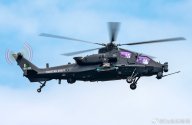You are using an out of date browser. It may not display this or other websites correctly.
You should upgrade or use an alternative browser.
You should upgrade or use an alternative browser.
Pakistan Military News, Reports, Data, etc.
- Thread starter A.Man
- Start date
I appreciate your balanced approach to evaluating the proposed S-1000 deal between the Pakistan Navy and Fincantieri.
If I may ask:
1. What's the rumored cost of the S-1000 deal?
2. What's the value proposition of the S-1000 program from the PN's perspective? What capabilities will these submarines add to the PN, and why is the PN prioritizing the acquisition and development of these capabilities?
Thank you for your questions. Many of these points have been addressed previously, but since you asked, here’s a brief summary for clarity:
- Cost of the S1000 deal:
That said, being a Fincantieri product, it won’t necessarily be "cheap" per ton, quality and European manufacturing standards carry a premium.
However, if Pakistan does proceed with a fleet of 6–9 units, and if recent reports of favorable Italian-Pakistani defense-industrial cooperation hold true, there’s a strong chance the pricing is strategically adjusted, possibly as part of a broader bilateral defense package
- Value proposition for the Pakistan Navy (PN):
With the Hangor-class (039B) and upgraded Agosta 90Bs handling blue-water and medium-depth operations, the S1000 adds a "light" layer optimized for coastal missions, interdiction, and possibly special operations.
Importantly, this isn’t a token capability: the S1000 is built on a mature design base (rooted in Fincantieri’s Todaro-class experience), reportedly includes full-sized torpedo tubes, and has even been discussed in the past for VLS integration.
The overall architecture, light (S1000), medium (Agosta & Hangor), and potentially heavy (future Type 41) gives PN a scalable, survivable, and regionally credible undersea posture across multiple mission sets. With local shipyards already stretched across Hangor, MILGEM, FAC(M), and auxiliary ship programs, it’s likely that the S1000s will be entirely constructed in Italy, supporting the reported 4–5 year induction timeline.
Bottom line: If this deal concludes as expected, the Pakistan Navy will significantly enhance its shallow-water capabilities, as S1000 is more than just a niche platform, it’s a key enabler for PN’s three-tiered submarine force structure, and it appears to be moving from concept to contract in a relatively short span, which reflects both operational urgency and strategic clarity.
IL-78 + JF-17 takeoff
Upturned exhausts - check
Serial number 786-301 - check
Laser DIRCM - check
AESA-based MAWS - check
It's likely a real photograph. And even if it isn't, it would be a pretty close representation of what the actual helicopters look like.
Veryyyyy purple glass
Probably the clearest video yet of Pakistani Z-10s. The announcer is referring to it as the "Z-10ME" from what I can make out
Since nobody pointed it out so here's me tooting my own horn, but yeah it's PSed as the flag is clearly the wrong way around
There is another..Probably the clearest video yet of Pakistani Z-10s. The announcer is referring to it as the "Z-10ME" from what I can make out


